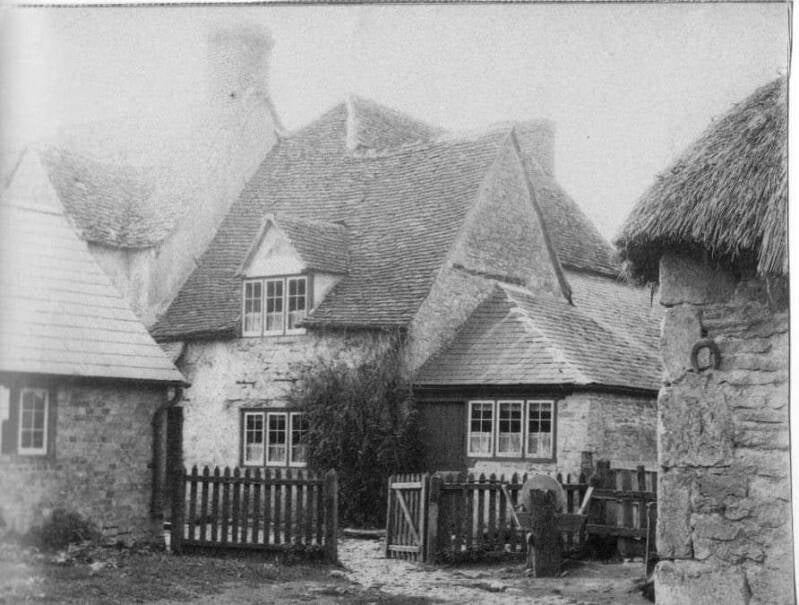The History of Elsfield
The small hamlet of Elsfield - approximately 11 miles from Bicester - is situated along part of an ancient highway known as 'The Portway', which ran from near Daventry (Northamptonshire), through Oxford, and on to the crossing over the River Thames in Wallingford.
The village's name is derived from Old English, meaning 'Elle/Ella's field/land'. Despite the plethora of Roman artefacts found close by, such as the temple in Woodeaton and pottery fragments on Otmoor, they appear to have bypassed Elsfield completely! Instead, the earliest evidence of a settlement there dates back to Anglo-Saxon times. In the Domesday Book (1086), it was recorded as 'Esefeld'.
At the time of the Domesday Book, just 26 inhabitants were recorded in 'Esefeld':
- 2 serfs (agricultural labourers, tied to working for the Lord of the Manor).
- 11 villeins (tenants who paid the Lord in either dues or services, in return for land).
- 7 bordars (tenants who held a cottage and perhaps a few acres of land, in return for providing specific services to the Lord).
- 6 'others'!
Women and children were naturally discounted from these early records, so the true population figure could be anything upto 100!
Prior to the Norman Conquest, the area around Elsfield was 'heavily wooded'; however, many trees were felled during the Middle Ages, in order to provide agricultural land. The Domesday Book mentions "a wood of 3 furlongs in length, and 3 in breadth" - presumably, this refers to the Forest of Stowood, which partially surrounded the village. It is possible that the modern wood in the northern part of the parish is a remnant of this once large and dense ancient woodland, which completely enclosed the neighbouring villages of Marston and Headington, and most of Woodeaton. 11th century residents would have found sustenance both on the fields, and in the forest.
The North family - whose seat was at Wroxton, near Banbury - were 'absentee landlords' for almost 200 years. Other notable families who once held the manor of Elsfield included:
- The d'Oillys.
- The de Plescys.
- The de Sratfords.
- The Pudseys.
Following the Conquest, the manor was held by a Norman known as 'Tustin, son of Rolf'.
Despite being relatively prosperous beforehand, by the end of the 18th century, Elsfield was described as "a village with a great appearance of poverty"; however, during the peak of the Agricultural Depression (1886), the people of Elsfield were still managing to get by, largely due to the high quality of the land within the parish.
The Church of St Thomas of Canterbury existed by 1122, when it was granted by King Henry I to St Frideswide's (Oxford). St Frideswide's actually disputed this, claiming instead that it was granted to them much earlier in King Ethelred's charter of 1004, but the charter in question makes no mention of Elsfield Church!
The church may have been dedicated to a different Saint prior to the 13th century, when - in 1273 - it was mostly rebuilt, and consecrated by Reynold, Bishop of Cloyne. The earliest surviving part of the building is the chancel arch, which dates back to between 1170 and 1180.
An 18th century manor house - known as Elsfield Manor - lies close to the village; although it has since been converted into private apartments, it was once the opulent residence of well-known writer John Buchan (1875 - 1940) between 1919 and 1935.
Fun fact: the 1650 will of a local wealthy woman called Mary Brett left provision for 30s to be paid annually, and distributed amongst the poor of Elsfield every Easter. A monument dedicated to Mary is inside the church.
(The image below was taken circa 1890-1910, by local woman Mary Jane Parsons, and shows the outlying Sescut Farm in Elsfield; although the present farmhouse dates back to the 17th century, the farm itself has existed for centuries, with a water mill recorded as being on land attached to the farm during the Middle Ages. Its name means 'cottages by the south elder tree'. It was once virtually cut off from the rest of the village by boggy marshland. Source: https://www.elsfield.net/gallery/history/buildings/).

Create Your Own Website With Webador